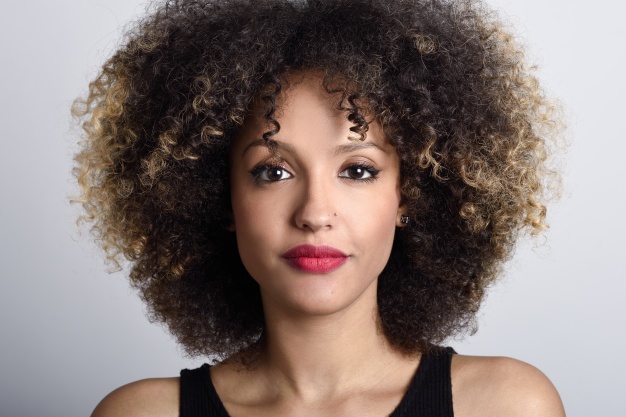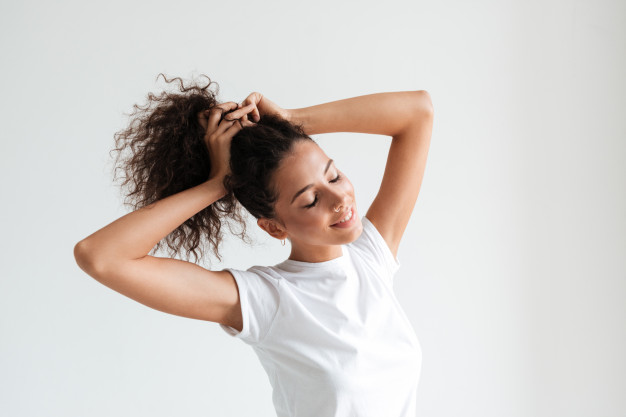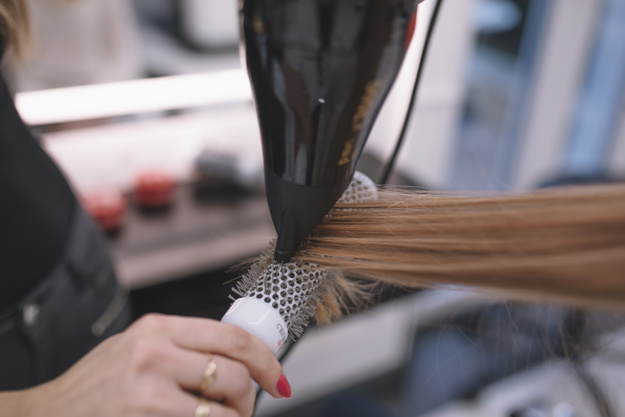For years, I battled with my naturally curly hair. Every hairdresser I visited either wanted to straighten it into submission or turn me into a poodle-permed glam-rocker from the eighties.
When I tried to style my hair at home, I would either end up with a mountain of soft, unmanageable frizz or curls that were so crispy and crunchy you could hear me rustle as I approached.
Then one evening at a business function, I was talking to a woman with beautifully defined natural-looking curls. I couldn’t stop looking at them! Over a drink afterward, I asked her which products she used, and – you’ve guessed it – she told me that she was a fan of the Curly Girl Method popularised by hairdresser Lorraine Massey. I ordered the book from Amazon as soon as I got home.
Since then, I’ve built a bespoke routine to look after my curls – blending inspiration from the Curly Girl Method with my real-life experience. But it’s taken a lot of trial, error, and frustration along the way. Here I’ll share what eventually worked for me.

To shampoo, or not to shampoo?
For me, probably the most surprising aspect of the Curly Girl Method was that it advocates completely moving away from the use of shampoo.
At that point, I was washing my hair – with shampoo. EVERY SINGLE DAY.
This was pretty much out of frustration with the frizz I encountered each morning when I woke up. I was getting in the shower anyway, so wasn’t it easier just to start again each day and tame my unruly locks by washing and styling my hair, battering into submission with a combination of heat styling and products?
It felt like a huge leap, but I was prepared to give it a go. I removed all shampoo from my hair care routine immediately and moved to ‘co-washing’ instead – using a conditioner to cleanse the scalp and hair.
And I hated it.
My scalp felt greasy, my hair felt lank and lifeless. I felt like people might be looking at me like that guy we’ve all encountered, who tells you he’s gone back to nature and given up on deodorant and shower gel and has never felt cleaner – the one you can smell from a mile away.
So I went back to shampoo, but I decided to try washing my hair every other day. After a couple of weeks, my hair felt more balanced. So I decided to experiment with co-washing for one wash a week – and it was ok! Over a year or so I transitioned from one co-wash a week to one shampoo wash a week, still washing every other day.
I started to get compliments on my hair. It was less dry and frizzy, and my curls were looking more defined. It felt good! Over the following year, I cut down the frequency, so I was washing my hair around once every three days, with one shampoo wash, followed by 2 conditioner washes. My hair has improved massively – and that’s the washing routine I’ve stuck with ever since.
My top tips:
- If you’re planning to change your hair-care routine, transition into it gradually
- Try to use sulfate-free shampoo if you can, and chose one for dry or damaged hair, as this will avoid stripping your hair of its natural oils
- For best results, loosen and separate your curls before washing by running your fingers through your hair
- As hair-washing is more about keeping your scalp clean, focus on massaging the cleansing product you are using into the scalp with the pads of your fingers to dislodge any build-up

Conditioning your curls
Curly hair can be prone to dryness – and that’s one of the culprits when it comes to frizz. Your waves and curls need plenty of moisture to keep them looking their best, and to avoid damage or breakage. And the curlier your hair, the dryer it tends to be – due to the shape of the hair strands, your hair’s natural oils may struggle to travel down the hair shaft and coat the entire length of your hair – so it helps to focus on the ends of your hair.
It’s also a good idea to use a deep-conditioning treatment every week or two – I tend to do this when I’m using shampoo to wash.
Drying your hair
It’s really easy to undo all that care by taking an aggressive approach to drying your hair. Frantically rubbing your hair with a terry towel will disrupt the cuticle and turn your hair into a frizz ball if you’re not careful. I saw a huge improvement when I started using a microfiber towel to dry my hair, particularly when I invested in a couple of microfiber towel turbans. I wrap the towel around my hair and allow it to soak up the moisture instead of rubbing. As an alternative, some people swear by using an old t-shirt to blot the hair.
And what about hair dryers? Ideally, it’s best to let your hair dry naturally, but we all know that sometimes there just isn’t time – if you do need to use a hair dryer, use it on a low setting with a diffuser, and make sure you use a heat protectant product to minimize damage.
Styling products
Before I apply any products to my wet hair, I gently separate my curls using my fingers, as brushing can damage and break the hair. I then spray my hair with a leave-in spray conditioner designed for damaged hair – I find it helps with the battle against frizz!
I then apply a styling product to help encourage my curls to form. My personal choice is to use a styling mousse specifically designed for curly or frizzy hair, although this does go against the Curly Girl Method which recommends using gel products – I just don’t like gels. You could also use a curl cream, but as with everything, it’s best to experiment and find the routine that suits you and your hair.

Definition
Once my hair is dry, I gently scrunch a little bit of serum into the ends for extra definition. You could also use an oil, such as jojoba or avocado if your hair is particularly thirsty or if your curls are on the tighter or collier end of the spectrum, but apply sparingly – it’s easier to add more but once it’s applied, you can’t take it away!
Other tips
Try to protect your hair from humidity, particularly in the shower. On days when you’re not washing your hair, use a shower cap to protect from the dreaded frizz.
Don’t brush or comb your hair. It can lead to damage or breakage – instead use your fingers to gently move your curls into place.
At night, consider using a silk or satin pillowcase to protect your curls while you sleep, as cotton pillowcases can be abrasive to your curls.
And finally – choose your hairdresser carefully! You may have to kiss a few frogs first, but having a hairdresser who understands curly hair, and who cuts your hair into a style that works with and encourages your natural curls can make a huge difference. Some prefer to cut hair dry, others wet, but your hairdresser should look at your hair when it is dry and make sure they understand the way your curls form – we all know how much curly hair bounces up when dry, and you should be confident that your hairdresser knows how to take this into account.
Why not try some of my tips to care for your curls? After some trial and error, you’ll find the hair care routine that works best for you – and your hair will repay you by looking and feeling great!
Written exclusively for our company by Sally Wood
Reference
Massey, Lorraine; Bender, Michele; Chiel, Deborah (2011). Curly Girl: The Handbook. Workman Publishing. ISBN 9780761156789.
Source: CoolMambo.com


